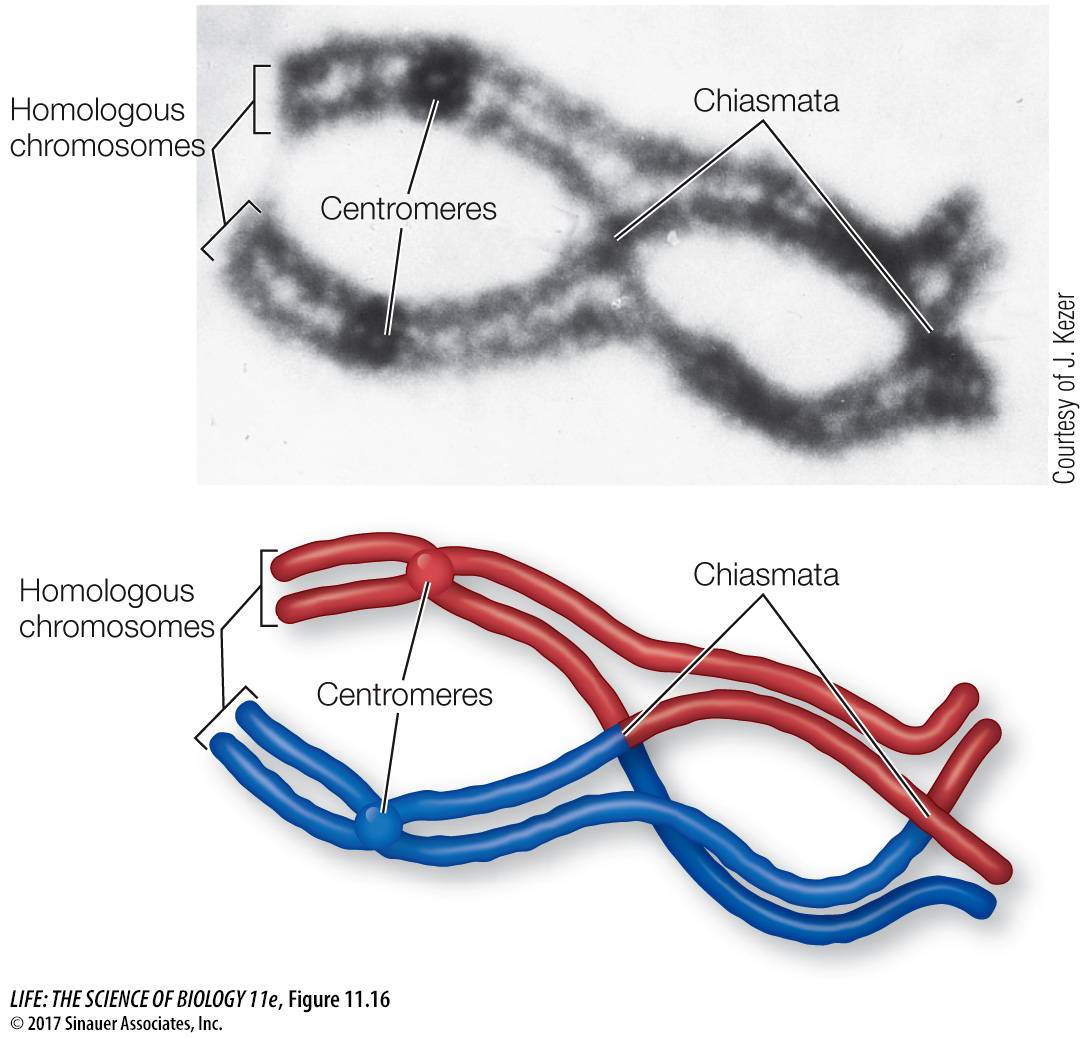Chromatid exchanges during meiosis I generate genetic diversity
Meiosis I begins with a long prophase I (the first three panels of Figure 11.15), during which the chromosomes change markedly. The homologous chromosomes pair by adhering along their lengths in a process called synapsis. (This does not usually happen in mitosis.) This pairing process lasts from prophase I to the end of metaphase I. The four chromatids of each pair of homologous chromosomes form a tetrad, or bivalent. For example, in a human cell at the end of prophase I there are 23 tetrads, each consisting of four chromatids. The four chromatids come from the two partners in each homologous pair of chromosomes.
Throughout prophase I and metaphase I, the chromatin continues to coil and compact, so that the chromosomes appear ever thicker. At a certain point, the homologous chromosomes begin to be pulled apart by spindle microtubules, especially near the centromeres, but they remain held together by physical attachments mediated by cohesins. Later in prophase, regions having these attachments take on an X-

A chiasma reflects an exchange of genetic material between nonsister chromatids on homologous chromosomes—

At this point, pause and think about what is going on at the molecular level: Each chromatid is a double-
Mitosis seldom takes more than an hour or two, but meiosis can take much longer. In human males, the cells in the testis that undergo meiosis take about a week for prophase I and about a month for the entire meiotic cycle. In females, prophase I begins long before a woman’s birth, during her early fetal development, resumes and proceeds to meiosis II as much as decades later, during the monthly ovarian cycle, and is completed only when fertilization occurs (see Key Concept 42.4).